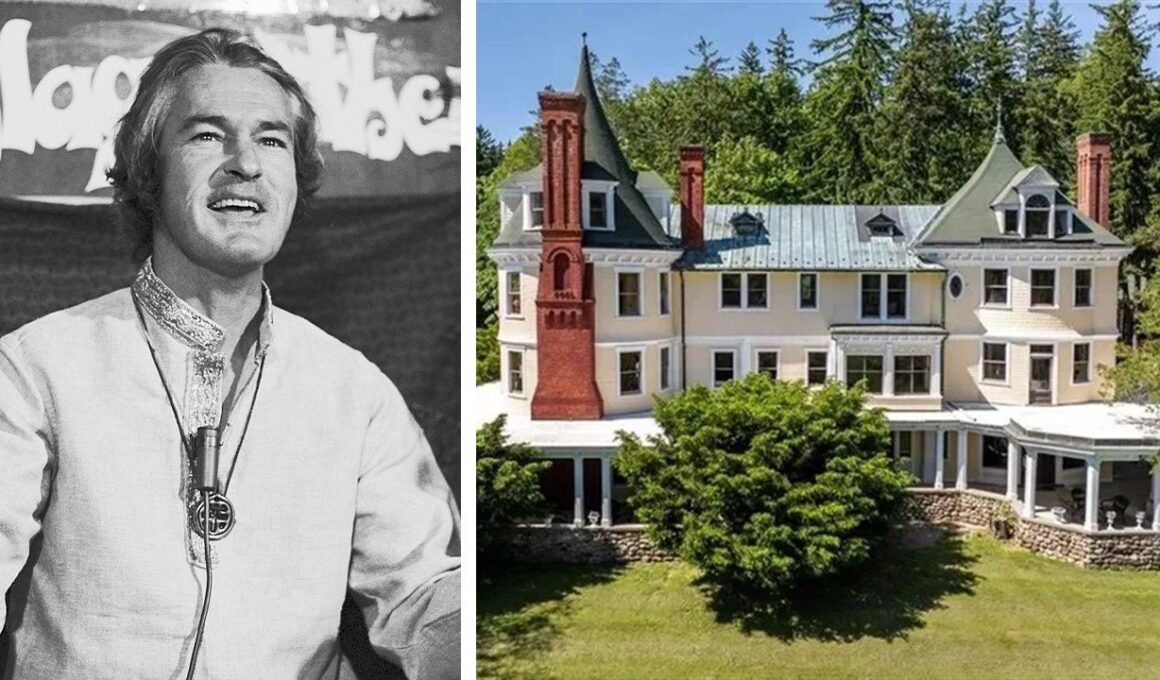A stunning New York estate that houses a dark and sordid history just hit the market for a staggering $65 million—five decades after it became home to “the most dangerous man in America.”
The historic Hitchcock Estate in Milbrook, NY, looks like an idyllic and upscale escape at first glance. Set on a lush 2,078-acre plot, it features two lakes, rolling fields, manicured lawns, and several ponds.
But while the 10-bedroom, eight-bathroom property is now hailed as an “exceptional, rare, valuable” estate in its Realtor.com® listing, it also comes with the intriguing and risque story a former resident: Harvard professor and psychedelics enthusiast, Timothy Leary.
Leary, who was known as the “High Priest of LSD” and was once branded “the most dangerous man in America” by then-President Richard Nixon, lived at the Hitchcock Estate as a tenant for five years back in the 1960s.
Having initially been built in 1889 by gas mogul Charles F. Dieterich as a picturesque family escape, the property instead became home to psychedelic experiments and alleged drug raids during Leary’s occupation.

( TYLER BLODGETT:HEATHER CRONER REAL ESTATE SOTHEBY’S INTERNATIONAL REALTY)

Trippy past
Dietrich first brought the estate to life by buying up five adjoining farms and enlisting famed architect Addison Mizner in 1912 to build the sprawling main house, along with a gatehouse that remains part of the property. Dietrich christened the property “Daheim,” the German word for “home,” in a nod to his homeland.
Following his death, the property was purchased by oilman Walter C. Teagle, who then sold it on to three members of the famous Hitchcock family—heirs to the Mellon dynasty fortune— William Mellon “Billy” Hitchcock, Tommy Hitchcock III, and Margaret Mellon “Peggy” Hitchcock.
The three siblings were familiar with Leary and his controversial work with psychedelics, particularly LSD, and offered up the estate to him as a base for his experiments.
Leary’s five-year occupation of the property has become the stuff of legend—and myth—over the years. Some have claimed that the estate became home to frequent drug-fueled parties and raves, while others insist that the bulk of the activities taking place within its walls were focused solely on research.
According to Nina Graboi, a devotee of the psychedelic movement, the sedate country house became “a cross between a country club, a madhouse, a research institute, a monastery, and a Fellini movie set,” Architectural Digest reported.
However, what remains clear is that the property soon became the target of multiple FBI raids, with the Wall Street Journal reporting that there were more than 90 arrests during 1966 and 1968, when Leary ultimately fled the Hitchcock Estate, taking with him his many dedicated followers.

( TYLER BLODGETT:HEATHER CRONER REAL ESTATE SOTHEBY’S INTERNATIONAL REALTY)

( TYLER BLODGETT:HEATHER CRONER REAL ESTATE SOTHEBY’S INTERNATIONAL REALTY)
Looking to the future
After Leary left the estate, it fell into disrepair, going largely unoccupied for many years, although tales of the so-called sordid goings-on would continue to circulate for many decades.
However, the home has since undergone major renovations—and is now back on the market for only the third time in its history.
So what can potential buyers expect that get in exchange for that staggering $65 million price tag?
According to the listing, there are plenty of perks for the price, particularly the restored, 14,706-square-foot main house. It is accompanied by a 10,000-square-foot guesthouse, a three-bedroom cottage, and a two-apartment carriage house.
Additionally, the property includes two large lakes, multiple ponds, farmland, a gate house, a stone bowling alley, two farmhouses, a stable, and a tennis pavilion.
“For now it is farmed self-sufficiently with extensive hay fields providing hay for the cattle farm,” the listing explains. “The stone farm buildings, updated over the years, are the same ones built and used by the first owner from over a century ago.”
The listing is held by Heather Croner of Heather Croner Real Estate Sotheby’s International Realty.







